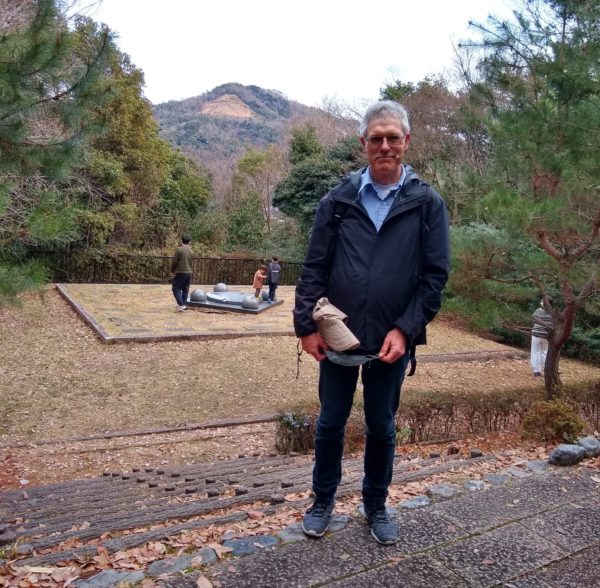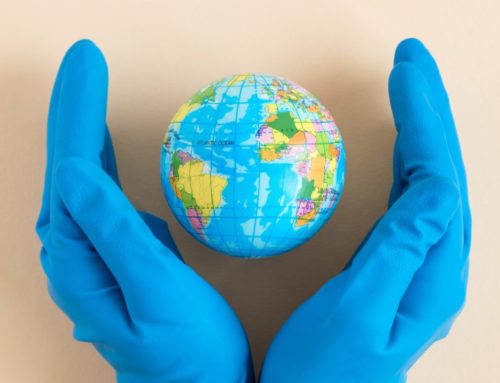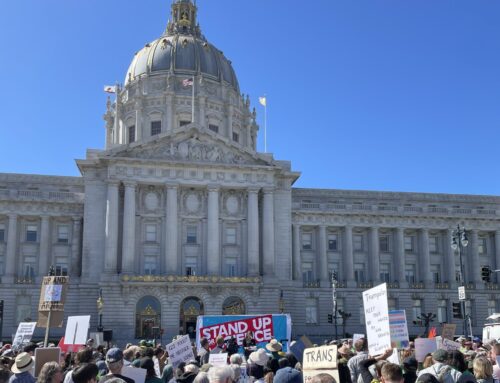AUGUST 9, 2022
By Stephen Roddy, PhD, SF Bay PSR member and professor at the University of San Francisco
In Japan, where two cities, Nagasaki and Hiroshima, were incinerated by atomic bombs dropped by U.S. forces during World War II, the nuclear weapons abolition movement is far more robust and mainstream than here in the U.S. This is what one might expect given the suffering of the Japanese people. During my recent stay in Japan, I was surprised and encouraged by the signs of creativity and renewed determination in multiple organizations working for nuclear disarmament.
In 2021-2022, I spent almost a year at a research institute nestled in bamboo- and pine-covered hills adjacent to the magnificent Katsura Imperial Villa located on the west side of Kyoto, Japan. Since the pandemic limited in-person contact and most travel, I had to follow developments in antiwar and antinuclear (weapons) activism mostly through the media. During a brief lull between waves of infection, I did attend one live event, a presentation by the ICAN partner organization Peace Boat, which also has a New York-based affiliate.
It should come as no surprise that antinuclear activism is far better covered by Japanese mainstream media than it is here in the U.S. From the death of the hibakusha elder, Tsuboi Sunao (1925-2021), to campaigns by both established and fledgling NGOs, nuclear weapons—past and present—occupy a secure place on the media’s agenda. Several youth groups’ recent requests for meetings with Prime Minister Kishida, who represents Hiroshima in the Diet (parliament), were covered in depth by NHK television and radio (the equivalents of PBS/NPR). And needless to say, the conflict in Ukraine has further heightened sensitivity among the general public to the dangers of nuclear weapons. According to the website “Diet Member Watch,” 52% of members of the Diet currently favor joining the United Nation’s Treaty on the Prohibition of Nuclear Weapons (TPNW) as an observer, which though impressive by U.S. standards, still lags far behind the overwhelming majority of the Japanese public, who favor joining the treaty either as an observer (87%) or a signatory (71%). This site tracks the positions of each representative on this issue, and posts interviews with Diet members about nuclear disarmament, such as one with Yamazoe Taku (in Japanese) about how the Ukraine War has thoroughly demolished any lingering belief in the viability of the so-called U.S. nuclear umbrella.
Tokyo, Hiroshima, and Nagasaki each host multiple educational institutions and NGOs working on advocacy and raising public awareness, such as the Center for Nuclear Weapons Abolition at Nagasaki University, the PCU Nagasaki Council, and Know Nukes Tokyo. Although their previously robust international collaboration has slowed during the Covid-19 crisis, all continue to hold regular online meetings and seminars open to the public and viewable from anywhere in the world.
While the ruling coalition (composed of the LDP and Kōmeitō parties) continues to bolster defense ties with the “Quad” (Australia/India/U.S./Japan) and has joined the U.S. in imposing sanctions on Russia, Prime Minister Kishida is showing some attentiveness to his constituents’ concerns by, for example, escorting the current U.S. ambassador (Rahm Emanuel) to meet with hibakusha in Hiroshima on March 26, 2022. He has also secured the agreement of the U.S. and other parties to hold the next G7 Summit in Hiroshima in April 2023, an opportunity for him to demonstrate concern for (despite his continuing inaction on) nuclear disarmament to both domestic and international audiences. Japanese NGOs and opposition parties are expected to seize on this momentum to press for, at a minimum, accession to observer status in the TPNW, as well as progress on other disarmament initiatives. Assuming that COVID restrictions will have been fully lifted by then, this event could also serve as a springboard for international cooperation between nuclear activists throughout the Pacific region, and to focus world attention on another potential flashpoint for war—the East China Sea.
Should cross-border travel to Japan and China become possible by Spring 2023, the G7 Summit presents possibilities for committed activists from the U.S. and elsewhere to launch, for example, a “peace flotilla” along the lines of the Gaza Freedom Flotilla. This could sail from Hiroshima and Nagasaki (the latter was known as Japan’s “window to the world” during 1639-1854) to Ningbo (China’s main port for trade with Nagasaki), and include stops in Taiwan, Jeju Island (Korea), Okinawa, or even Hawaii, the Marshall Islands, Guam, or other sites of military buildup and nuclear weapons tests around the Pacific. Another possibility would be to partner with Kakuwaka, a Hiroshima-based youth group, to put on some joint Bay Area-Hiroshima actions during the G7 Summit. Its leaders have expressed strong interest in partnering with organizations here.





